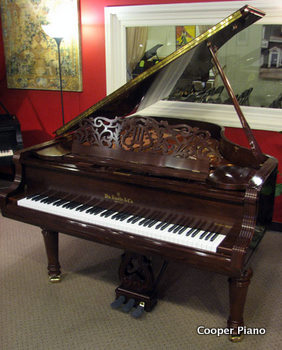
Shopping for grand pianos can be a daunting task. With so many different types, manufacturers, and models to consider, the choice can be over whelming. Here are some things to consider when shopping for Knabe grand pianos.
1) Size and placement : Before buying a piano, decide where you want to put it. Make sure that any piano you buy will fit in that space. Most grand pianos can be taken apart for moving by piano moving companies – but make sure that the largest piece will be able to fit through any doors leading to the desired location of the piano. When choosing where to put your piano, consider the acoustics of the room. Sound reacts differently depending on the construction and design of a room. Test the acoustics of different rooms by singing, playing an instrument, or listening to a music player.

2) Body length : Longer pianos can accommodate longer strings. Longer piano strings have a richer, more luxurious tone. However, longer grand pianos cost more than shorter models, and take up more space. Knabe’s grand pianos are between 4’8", and an impressive 6’10".
3) The strings: Ask what strings (or ‘wire’) are in any piano you’re considering. The quality and color of the sounds produced by each type of piano wire is unique. If a string breaks or wears out, it is vital that it’s replaced with the same type of wire, or the sound will be thrown off. Knabe grand pianos are made with Roslau music wire, which is widely considered to be the best wire available.

5) Play the piano : Nothing is more important than playing each piano you’re looking at it. Listen to the sound, feel how the keys and peddle respond, have someone else play it, and listen to it across the room. Make sure that the piano you buy is one you’re comfortable with, and sounds good to you






